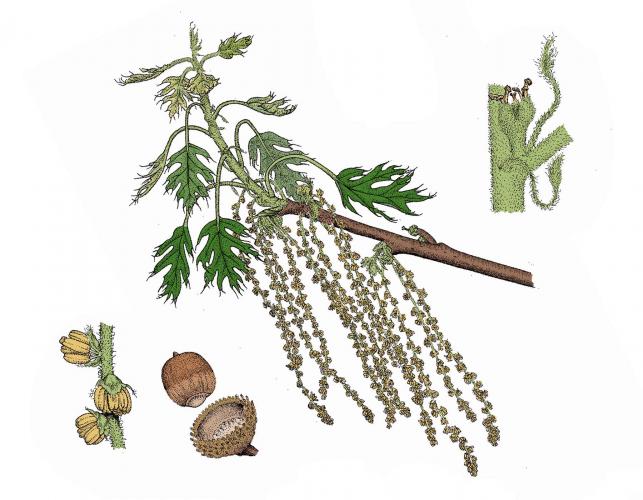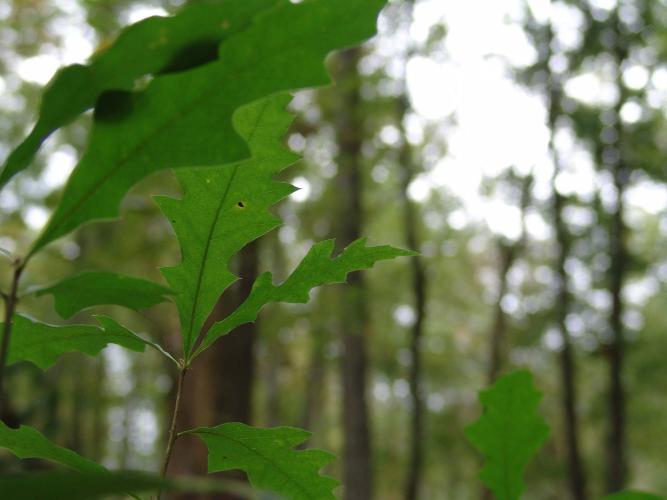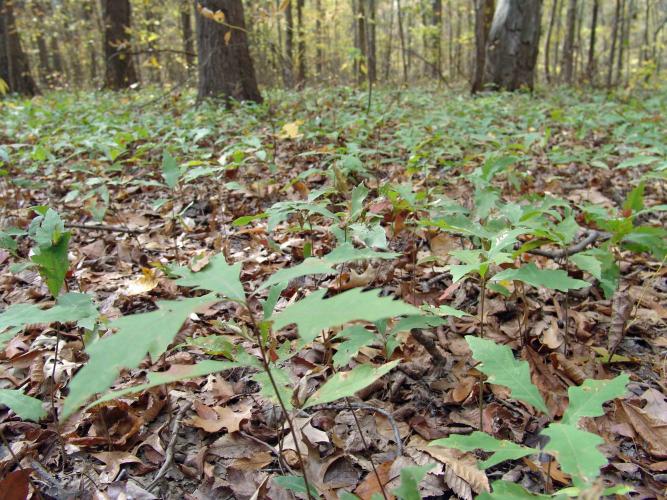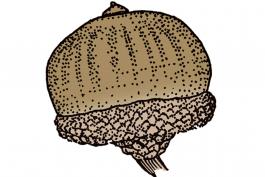www.tiptonmo.us
To reserve a shelter house or ball field call city hall, 660.433.2323

Pin oak is a large tree with a tall, straight trunk and pyramidal crown. Lower limbs droop, middle limbs are horizontal, and top limbs slant upward.
Leaves are alternate, simple, 4–6 inches long, broadest in the middle; lobes usually 5–9; notches rounded, deep, ⅔ or more to the central vein; each lobe with 2–4 sharp-pointed teeth, bristle-tipped. Upper surface dark green, shiny; lower surface paler, smooth, with tufts of hair in the vein axils. Turn yellow to deep scarlet in fall.
Bark light brown, smooth, shiny; becomes gray-brown, shallowly grooved and slightly roughened with closely flattened scales with age. The many limbs make pin knots in the lumber.
Flowering April–May, in catkins.
Fruits September–October, acorns solitary or in clusters of 2 or 3, often striped, ⅜ to ½ inch long, hemispherical; the shallow cup covers ¼ to ⅓ of the nut. Fruit bitter, ripening in autumn of second year.
Similar species: Northern pin oak (Q. ellipsoidalis): acorns are longer; known only in northern Missouri.
Height: to 100 feet.
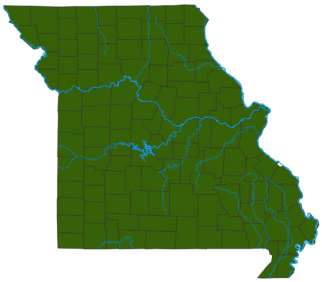
Statewide; less common in the Ozark region.
Occurs in bottomland forests in floodplains along streams, rivers, sloughs, and edges of swamps; also around margins of upland sinkhole ponds and flatwoods, on poorly drained prairie soils, in fencerows, and along draws in the prairie regions of the state. Pin oak grows faster than other oaks and is used extensively in landscaping. This favorite yard, street, and park tree is often planted, for example, on college campuses and in industrial parks.
Pin oaks are popular in landscaping and for windbreaks. The wood has many uses. If you are planting a pin oak, remember that alkaline soils cause pin oaks to suffer from iron chlorosis, resulting in poor health and yellowish leaves. You may need to supplement the soil to keep them healthy.
Songbirds, woodpeckers, ducks, turkey, quail, mice, squirrels, raccoon, and deer all eat the acorns. Big trees like pin oaks provide many places for bird and squirrel nests. When these trees die, many insects burrow in the rotting wood and provide food for woodpeckers and other insectivores.




